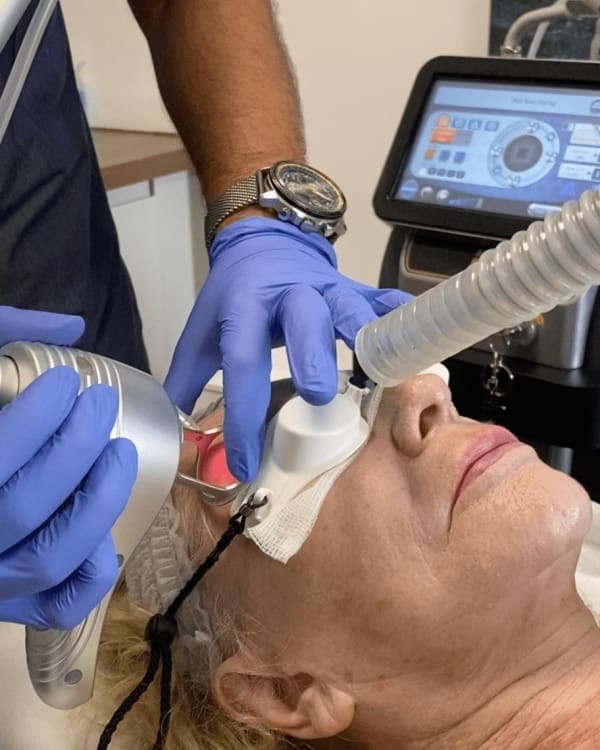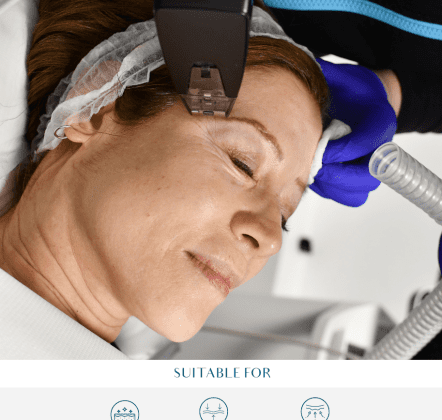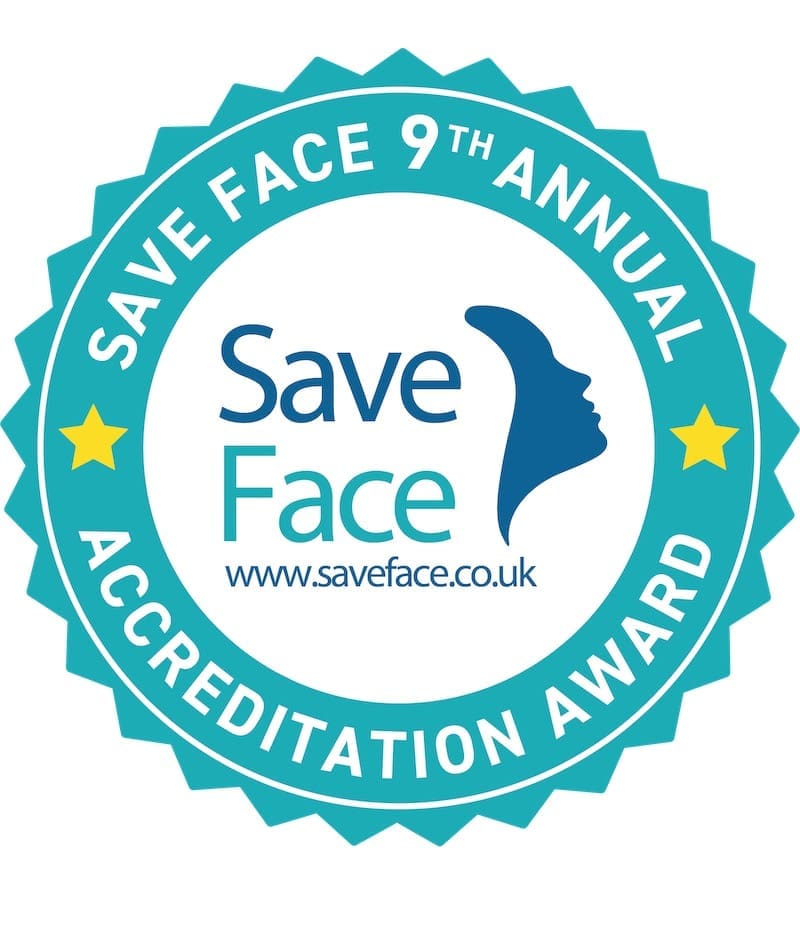Meaning Of Blemishes On Face
Meaning Of Blemishes On Face
Blemishes are one of the most common skin concerns, affecting people of all ages and backgrounds. They can take many forms and appear in a variety of guises, from small, dark spots to larger, more noticeable marks. Here, we explore the different types of blemishes, what causes them and how to look after your skin, especially if you’re prone to blemishes.

What is a blemish?
A blemish is a mark or area of discoloration on the skin. They can be caused by a range of things, including acne, hyper-pigmentation, melasma, birthmarks and scars. Blemishes can appear anywhere on the body, but it is the face that is most commonly affected.
While most blemishes are harmless, some can be a sign of skin cancer. If you have any moles or marks that change, it’s always worth getting them checked out by a doctor.
The location and type of blemishes on your face can offer insights into potential underlying causes or health issues. Here’s what your blemishes might mean:
Blemish Location and Meaning
Forehead and T-zone: Blemishes in this area often indicate excess oil production and may be linked to stress or digestive issues.
Cheeks: Blemishes here might be related to respiratory problems, allergies, or poor hygiene habits like touching your face frequently or using dirty makeup brushes.
Chin and Jawline: These areas are commonly affected by hormonal changes. Persistent blemishes here could signal hormonal imbalances or might be exacerbated by factors like diet or stress.
Around the Mouth: Spots in this area might be linked to certain foods in your diet or could be a reaction to toothpaste ingredients.
Nose: Blackheads and enlarged pores on the nose are often due to overactive sebaceous glands. They may also indicate digestive issues or food sensitivities.
What is a skin blemish?
A skin blemish is any mark, spot or area of discoloration on the skin. Blemishes can be caused by a range of things, from genetics to hormonal fluctuations and environmental factors. They can appear as dark spots, red bumps or whiteheads and, in some cases, can be itchy or painful. By understanding the different types of blemishes, you’ll be better equipped to treat them.
Types of skin blemishes
Blemishes can appear in many guises on the face, including:
- Acne: Pimples, blackheads and whiteheads are all caused by blocked pores and overactive oil glands.
- Dark spots: Many dark spots are caused by acne scarring or sun damage.
- Age spots: Also known as liver spots, age spots are usually caused by sun damage.
- Cold sores: Fluid-filled blisters caused by the herpes simplex virus.
- Ingrown hairs: Often caused by hair removal methods and hair removal techniques.
- Hyper-pigmentation: Dark patches of skin caused by overproduction of melanin.
A consistent skincare routine is essential for healthy skin and preventing many types of blemishes.
The location and type of blemishes on your face can give clues as to what might be causing them. Here, we explore what your blemishes might be telling you:
Acne and acne scars
Acne is one of the most common skin concerns, affecting people of all ages. It occurs when pores become blocked by oil, bacteria and dead skin cells, causing inflammation, redness and, in some cases, painful lesions. Acne scars can be much trickier to treat than acne itself, as they can leave behind dark spots or uneven skin texture.
Scars can appear as dark spots or rolling texture to deep, pitted scars. Treating acne scars is possible with a variety of treatments, from topical creams to oral antibiotics and laser therapy.
Hyper-pigmentation and melasma
Hyper-pigmentation occurs when the skin produces too much melanin, causing dark spots or discoloration. Melasma is a type of hyper-pigmentation caused by hormonal fluctuations, sun exposure and genetics. It appears as brown or grey patches on the face. Hyper-pigmentation and melasma treatments include topical treatments, chemical peels and laser therapy.
Birthmarks and scars
Birthmarks are benign skin growths that are present at birth. They can be caused by genetics, hormonal fluctuations and environmental factors. Scars, on the other hand, are marks left on the skin after injury, surgery or inflammation. Birthmarks and scars can be treated with a range of methods, from laser therapy to surgery and topical treatments, to improve their appearance and blend them with surrounding skin.
Understanding the different types of blemishes and what causes them is key to preventing them. If you’re prone to blemishes, whether acne, hyper-pigmentation or scars, there are treatments available to help you achieve a clearer complexion.
Where are your blemishes appearing?
Forehead and T-zone: Blemishes in this area are often caused by oily skin and could be linked to stress and digestive issues. They can also be caused by your hair care routine, as many hair products can clog pores.
Cheeks: Blemishes on the cheeks can be caused by respiratory issues or allergies. They can also be caused by poor hygiene, such as frequently touching your face or not washing your makeup brushes enough.
Chin and jawline: The chin and jaw area is often hormonal. Acne in this area can be caused by fluctuations in your hormones and could be exacerbated by your diet or stress.
Around the mouth: Blemishes around the mouth can be caused by certain foods or ingredients in your toothpaste.
Nose: Blackheads and large pores on the nose are often caused by overactive oil glands. They can also be caused by digestive issues or food sensitivities.
While these correlations can be helpful, they are not foolproof. If you experience persistent or severe blemishing, it’s always worth getting it checked out by a dermatologist.
What causes blemishes and clogged pores?
A range of factors can cause blemishes:
- Hormonal fluctuations, such as during puberty or pregnancy
- Overactive oil glands
- Dead skin cells
- Bacteria
- Sun damage
- Certain medications, such as hormonal birth control
- Cosmetics or environmental irritation
How to treat acne scarring?
Blemishes can be treated in a variety of ways, depending on their severity and type. Here are some general approaches:
- Acne and clogged pores: salicylic acid products
- Dark spots and hyper-pigmentation: vitamin C serums
- Various blemishes: azelaic acid
- Clogged pores and dead skin cells: regular exfoliation
- Dehydration: hyaluronic acid
If you experience persistent or severe blemishing, it’s always worth getting advice from a doctor.
How to look after blemish-prone skin?
To prevent and treat blemishes, we recommend:
- Follow a consistent skincare routine to prevent blemishes.
- Protect your skin from sun damage.
- Keep hydrated and eat a healthy diet.
- Avoid picking at your skin.
- Use non-comedogenic products to prevent clogged pores.
Most blemishes are harmless and can be treated, but some can be a sign of skin cancer. If you notice any changes to your skin or have suspicions about skin cancer, see a dermatologist immediately. By understanding your blemishes and looking after your skin, you can work towards a healthier, clearer complexion.































































